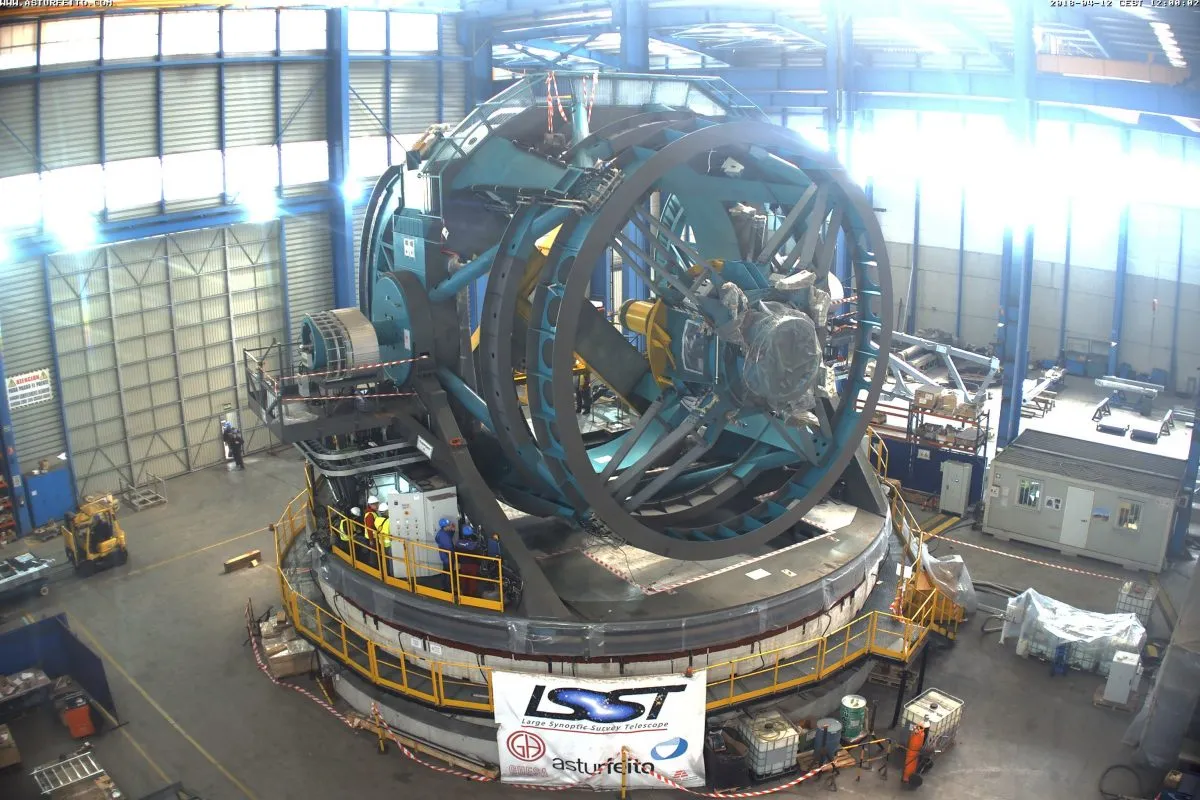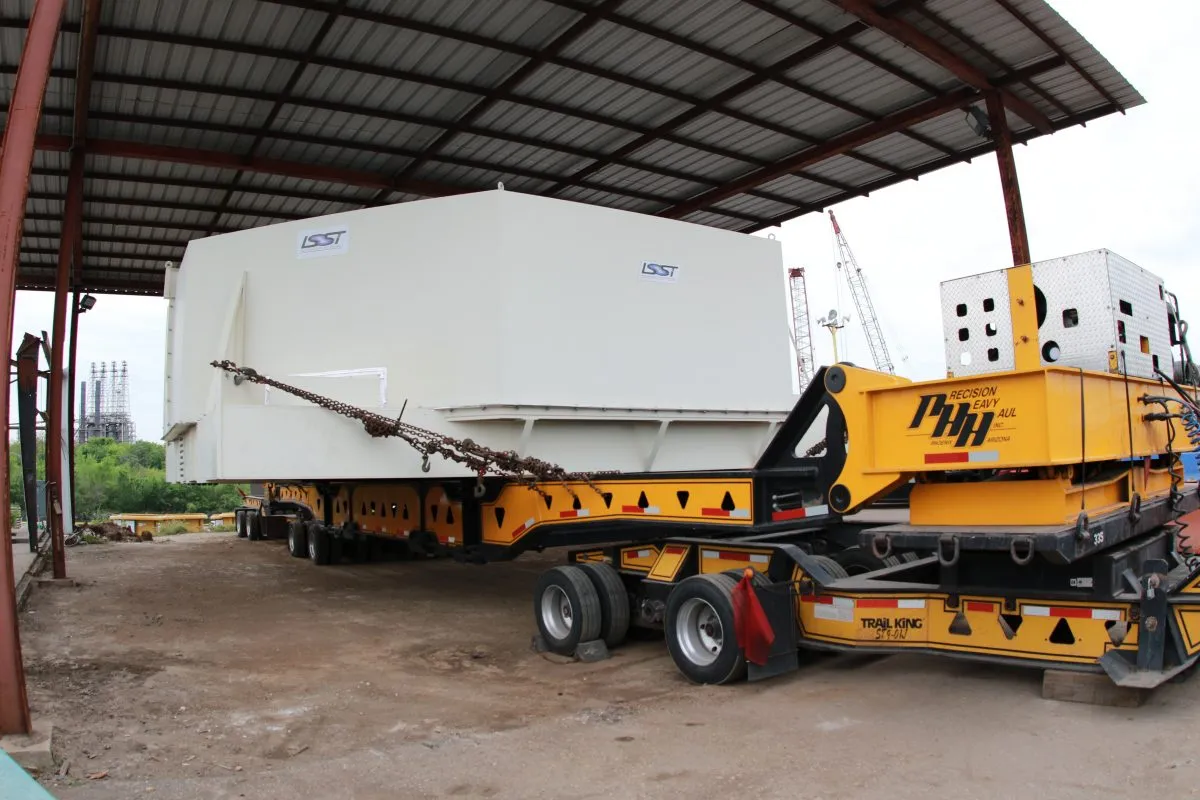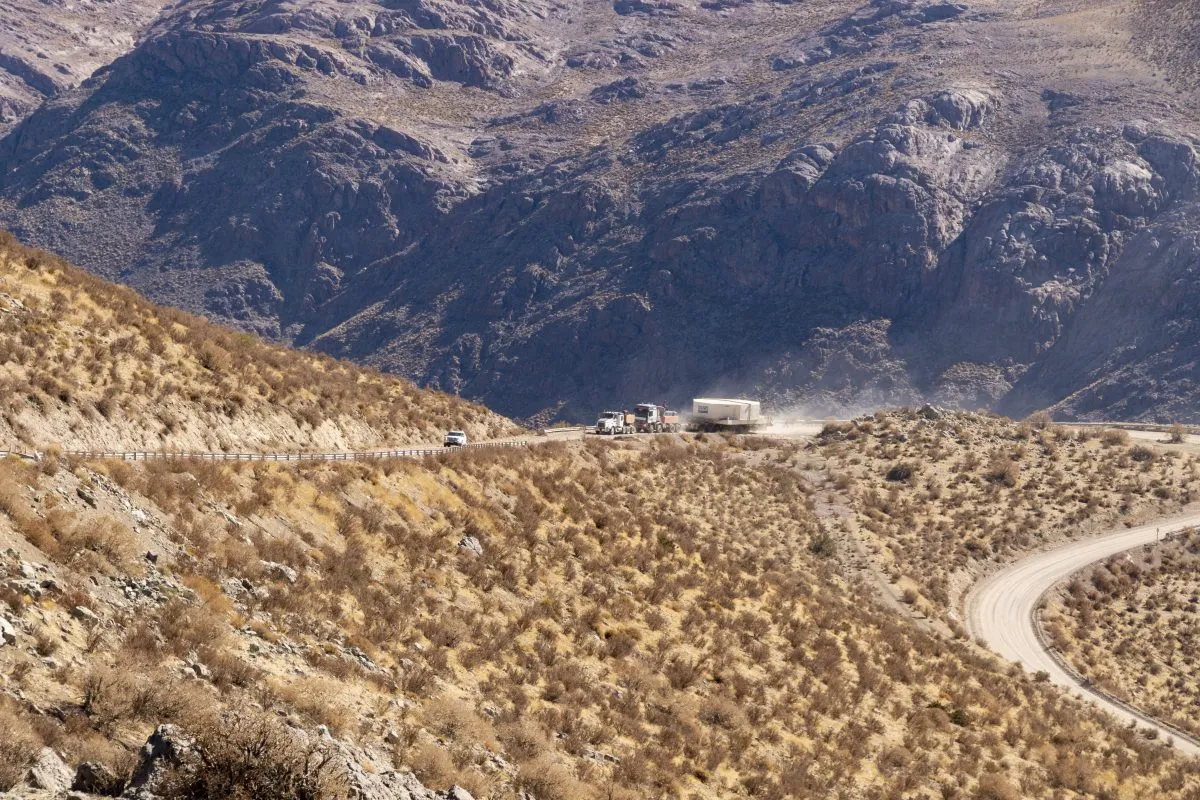One week before the 2 July 2019 total solar eclipse I’m driving over Chile’s barren mountain road D-595, heading north to the lush Elqui Valley. Suddenly, between the villages of Séron and Rio Hurtado, I’m treated to a brief but impressive view of the Large Synoptic Survey Telescope (LSST) perched high atop a mountain ridge in the east.
Next to the building I can make out a towering crane: construction of the telescope is still in full progress.
The scene can’t be more than ten kilometres away as the crow flies, but to get there requires another 100-kilometre drive, mainly on sinuous gravel roads.
The Large Synoptic Survey Telescope is astronomy’s next discovery machine. With its 8.4-metre primary mirror it won’t be the largest telescope on the planet, but it will be by far the fastest instrument of this size.

Three times a week its 3-gigapixel camera – the largest digital camera ever built – will map the entire visible sky. Dedicated algorithms will search through the staggering amount of data – some 20 terabytes per night – for near-Earth asteroids, faint supernova explosions and lots of other transient objects in the nearby and distant Universe.
Moreover, LSST is expected to shed new light on the mystery of dark energy, the enigmatic ‘force’ that is accelerating cosmic expansion.
When I finally arrive on the 2715-metre-altitude summit of Cerro Pachón (also home to the 8-metre Gemini South Telescope and the 4.1-metre SOAR or Southern Astrophysical Research Telescope), I’m blown away by the sheer size of the LSST building.
The cylindrical telescope enclosure ("Yes, we call it a dome," says site manager Eduardo Serrano) is still an open steel construction, as tall as a nine-storey apartment building.
But the lower part of the huge building, which houses the coating chambers for the telescope’s mirrors, is fully completed. ‘Our job is done,’ says coating chamber engineer Tomislav Vicuna.

LSST’s 3.4-metre convex secondary mirror (M2) – still stored in a wooden crate during my visit – has been successfully coated with a thin layer of silver on July 16.
The huge 8.4-metre primary, known as M1/M3 since it doubles as the tertiary, also arrived on the mountain earlier this year; it will receive an aluminium coating at a later stage.
According to Vicuna, the combination of aluminium and silver will yield optimal transmission at wavelengths from infrared to ultraviolet.
Meanwhile, the actual telescope construction has been completed in Spain and is ready for shipment to Chile once the dome is completed.
A couple of days after my trip to Cerro Pachón, I meet up with LSST Assembly, Integration and Verification (AIV) manager Jacques Sebag at his house in La Serena.
Back in 2003, Sebag was the very first person employed by the LSST project.
"The original design was quite different," he tells me, "with a longer telescope and a smaller field of view. I convinced everyone to pick a much more compact design."
The larger field of view (a whopping 3.5 degrees across) and the quick slewing enabled by the compact design together result in a very high survey efficiency.

Sebag also reveals the rationale behind the telescope’s unique optical design.
The 5.1-metre tertiary mirror is actually the central part of the 8.4-metre primary, albeit with a much stronger curvature.
The University of Arizona’s Mirror Lab has been one of the LSST partner institutions from the very start, Sebag explains.
However, their honeycomb technique can’t produce mirrors with large central holes.
Instead, the mirror mould used in the lab’s rotating oven was adapted in advance to yield a concave primary with a much thicker, bowl-shaped central part, which subsequently had to be grinded away.
"It was difficult, but successful."
Once completed, the giant LSST camera will take two 15-second exposures every minute, using a set of six filters.
There are no competing projects under construction. There’s only one LSST.
Jacques Sebag, LSST Assembly, Integration and Verification manager
Eventually every single part of the sky visible from Cerro Pachón will be imaged at least 800 times down to magnitude 24.5.
The survey – which will be made public to the worldwide astronomical community right from the start – is expected to increase the number of known asteroids and other small solar system bodies by a factor of 100, yield millions of supernovae and other transient objects, and map several billion galaxies all the way out to the edge of the observable universe.
Cosmology is one of the main science drivers for the new telescope.
Mapping the three-dimensional distribution of clusters and galaxies through time and space, and studying the weak gravitational lensing effects of mass concentrations, will help characterise both dark energy and dark matter – the two most mysterious ingredients of the cosmos.
Similar studies, at lower sensitivity and precision and for a much smaller part of the sky, have been carried out by smaller facilities like the Dark Energy Camera (DECAM) in the prime focus of the 4-meter Blanco Telescope at nearby Cerro Tololo Inter-American Observatory.
However, says DECAM assistant scientist Alfredo Zenteno, ‘LSST is better at everything.’

By building LSST at Cerro Pachón, the project could use existing infrastructure; the 40-kilometre access road is unpaved but very smooth.
The sleek multi-level building has been designed to produce as little air turbulence as possible.
Site manager Serrano walks me around the huge hollow concrete pier (16 metres in diameter) that will support the 350-ton telescope.
And he proudly shows me the giant lift that has been constructed to transport the mirrors from the telescope level to the German-built coating chamber whenever they need to be recoated.
Because the borosilicate primary is so brittle, the supporting mirror cell (which was lying in wait in the La Serena harbour during my visit) must always move along with the mirror during recoating.
As a result, the telescope will be offline for one month every two years or so.

When the LSST was first conceived almost twenty years ago, says Sebag, astronomers expected first light in 2012 or 2013.
But as always, the project has been plagued by smaller and larger setbacks and delays.
Right now, the problem really lies with the Italian construction company that is building the dome.
"They’re about two years behind schedule," says Serrano, looking up at the unfinished structure, silhouetted against the crystal-clear blue sky.
Still, when the new facility will start operations some four years from now, it has the potential of revolutionising astronomy.
Also, its 3-gigapixel camera will still be the largest ever.
"There are no competing projects under construction," says Sebag. "There’s only one LSST."
One thing’s for sure: I’ll have to return in 2023. I can hardly wait.
Govert Schilling is a science author and space journalist.
